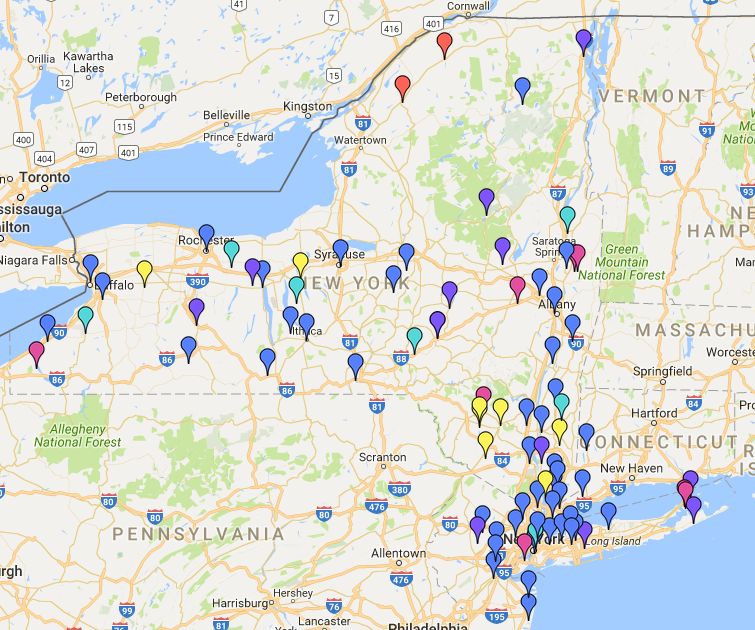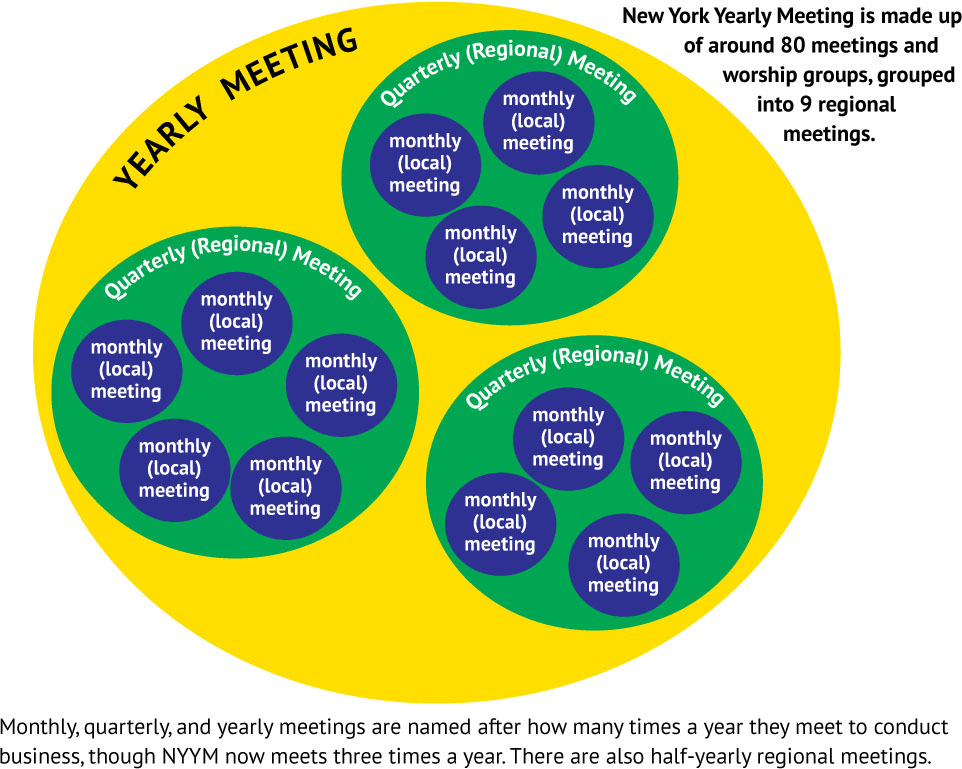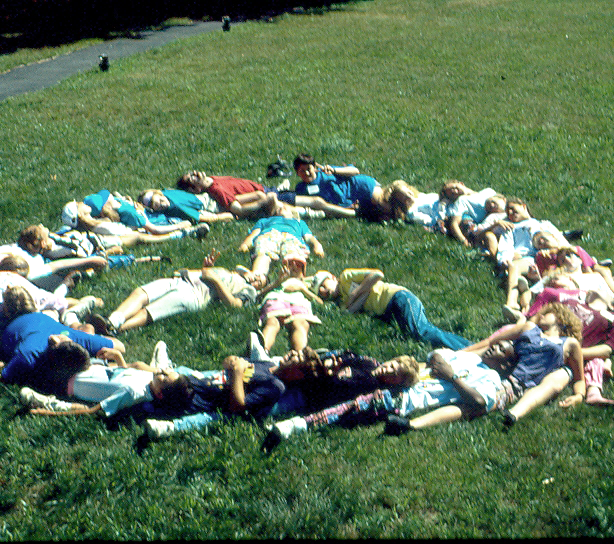Report of the General Secretary, Summer Sessions 2014
When I was at the FGC Gathering this year, I was invited to be part of a gathering of Friends who visit monthly meetings. We divided into small groups to share about our experience. One Friend in my small group asked me how the meetings in NYYM were doing. I responded that it varied quite a bit. Some were thriving, I said. Some had come through a challenging time of contraction and fear about their future, and were now rebounding. Many were small and struggling, and some, afraid of dying. He then asked me, what are the characteristics of the meetings that were thriving- what did they have in
I thought about our meetings that are vibrant, and I said they all have considerable depth of worship, and they all have a healthy community. He asked me what I meant by healthy community, and I responded, one in which inevitable conflict is dealt with forthrightly and skillfully, and which also proactively nurtures the fabric of community. Someone else in the group asked, “What about First Day Schools?” and I realized I had left off the third component of a thriving meeting, the presence of children and youth, and the capacity to nurture their spiritual lives. We talked about the difficulty of meetings with no First Day Schools in attracting and retaining young families; those families were more apt to go to another meeting, even if it was further away from where they lived, or to another denomination entirely, so that their children wouldn’t be the only ones there.
In that brief conversation, we identified what I feel is the core of what we are called to create in our monthly meetings- deep worship, healthy community, and a meaningful place for our children. I’d like to expand upon those three crucial elements.
One Friend of mine once said “Once I experienced a gathered meeting for worship, I was willing to put up with any amount of dysfunction to have that experience again.” Indeed, I think there is a lot of truth in this. Once we have experienced that power, we want more of it. A member of my meeting went to the consultation on eldering at Powell House, and said she had never experienced such deep worship. “I want more of that!” she said. The biggest draw we can offer a newcomer is for them to encounter a depth in our worship. And that same depth will sustain us as communities as we go through the inevitable conflicts which are a part of life together.
Which leads us to the next aspect of what I believe we are called to create, healthy communities. We have done a lot of work in becoming more skillful in using conflict to help build up, rather than tear down, our communities, largely due to the gifted work of our Conflict Transformation Committee. And there is still much more to do here. At the same time, we need to become more skillful at proactively weaving the fabric of our communities.
Most of our pastoral care committees, or for those meetings which don’t have one, our ministry and counsel or ministry and oversight committees, mostly respond to the acute needs of individuals, Friends in one kind of difficulty or crisis or another. This is valuable, crucial work. Yet there is another dimension of community life which needs tending, and which usually remains unaddressed, and that is the work of proactively weaving the fabric of community. This is work done behind the scenes, encouraging the gifts and participation of newcomers (and old-timers), connecting Friends who have something to offer each other, remonstrating with a Friend who is out of line, thereby nipping in the bud what could blossom into a serious conflict, reaching out to those who have drifted away, and a thousand other invisible, small acts which create a depth of community which is no accident, but to an outsider, looks like it has just happened. Our pastoral meetings are much better at this kind of work, and have much to teach the rest of us about this critical dimension of community life. Proactively building up community life makes full-blown conflict less likely, nurtures the gifts carried by Friends in the community, tends to the myriad connections which make up the complex web of community, and thereby fosters a rich tenor of love in a meeting.
While we can certainly have wonderful meetings where no children are present, I think we would all agree that having a full range of ages in a meeting adds a dimension which we all cherish and hope for. A few of our meetings have lots of children, fully engaged in the life of the meeting. Many of our meetings no longer have a First Day School. Some have one, but with only a very few children, with a significant range of ages in that group. It is crucial that we address how we support and nurture children in our meetings.
There is a lot of discussion going on, and some experimentation, amongst parents of young children about rethinking the way we involve children in the lives of our meetings. This is happening both in this yearly meeting and across the Society of Friends. The assumption that children should be kept out of worship, and cared for in a separate setting, is being reexamined, especially in light of some notable successes by some parents in bringing their children up with a fuller exposure to our practice of worship. I am very excited by the promise of some of this experimentation, and it turns on its head the notion that we have to have a significant number of children in a meeting for there to be a critical mass which might allow a new family to want to keep coming back. As we as a body address our need to support children and young families, we need to be willing to embark upon some of these experiments. I see us having five or six meetings serving as pilot projects, learning laboratories, as we explore ways of more fully integrating our children into our worship and therefore into the core of our life as a meeting.
While I believe this vision of vital meetings with powerful worship, healthy communities, and all generations present and well cared for is not only possible, but quite achievable, it is a far cry from the current reality in many of our meetings. And I am concerned that we are losing the capacity to help us move from where we are to where we are called to be. This erosion in our capacity has been going on for a long time, and the progression has been so gradual, so subtle, that it has been easy to ignore. Each new small decline becomes the new normal, and there have been few major shocks to spur us to action.
We need to wake up to what has been happening, to assess where we are, and to act appropriately. Many of our meetings do not feel they have the energy or the people-power to do a Quaker Quest outreach effort. Other meetings do not feel they have the capacity to even do the scaled-down version, Seeking the Spirit, with which some of our meetings found strengthened their meeting and also brought in newcomers. One Friend from a meeting with a chronic pattern of discord said she didn’t feel they had the energy to address its roots in their community. Another meeting feels they would benefit greatly from being in a different location, but doesn’t feel they have the energy it would take to do the search and the move. I have heard from many meetings that their diminishing numbers have greatly affected their donations, and thereby, their capacity to sustain themselves well. And as our overall numbers dwindle, a little more each year, this means the yearly meeting has less of a financial base from which to attend to these needs.
In the ten years I have served this yearly meeting, we have closed two monthly meetings. We have a handful more which are cause for concern, with less than four at worship many First Days. Our attendance at summer sessions now ranges between 450 and 500, 2/3 of what it used to be. Junior Yearly Meeting has had 100-125 in it recently, half of what we had in years past. I have several times included graphs in my General Secretary reports of our decline in membership over the past almost sixty years. We are now only losing about 1% per year, which is a lot better than those years when it was 5-10%, but the graph is still going downwards. We are now less than half the membership we were in 1955.
We as a yearly meeting need to address where we are and where we are heading now, not later when our capacity has eroded even further. We need to acknowledge the slow but sustained decline we have been in, and act. Our current clerk of Financial Services works professionally with non-profits, and has looked at our budgets over the past ten years, and concluded that, having kept the budget flat despite inflation by persistent cutting for those ten years, we cannot cut further, without doing damage to our common work. He cautions us against entering into a downward spiral whereby cutting budgets cuts services and programs, which diminishes participation and therefore support, which reduces donations, which necessitates further budget cutting, etc.
There will not be a better time than this for us to dig in and do this work. Waiting will only allow for more erosion of our capacity. And continuing to do the same thing and hoping for a different outcome is also not an option. That is naïve, at best. We need to change. This is a time for all hands on deck, pulling together. We need everyone’s skills, gifts, and leadings at this time. To wait for some later time when conditions will be better ignores the trends of the last decades.
I quote from the Statement of Leadings and Priorities:
…We commit to focus the energy and resources of our Yearly Meeting for the coming five years on achieving a vision of growing and vital monthly meetings which are open and loving communities, effective in their outreach, active in the world, and skillful in nurturing the spiritual lives of Friends of all ages. We envision a yearly meeting structure which is devoted to furthering this vision, is an effective focal point for organizing our collective work in the world, and which communicates that work broadly. We envision a yearly meeting structure which is accountable to these priorities, transparent in its finances and integrally connected to the monthly meetings it represents and supports. We envision a yearly meeting where there will no longer be “yearly meeting Friends” and “monthly meeting Friends,” but rather one, whole yearly meeting devoted to faithfully living out the leadings of the Spirit.
If we are to realize this vision, we are going to need to focus our efforts. We will need to increase volunteer work, our backbone and greatest strength, in key areas. And, we are also going to need to increase, not just maintain, our budget. We will need more staff time supporting young adults, and as we address the needs of children and young families, we will need some sort of staff support there, as well. And it seems highly likely that we as a yearly meeting will need to step up some in the years ahead to pay for part of the ARCH program, currently almost fully supported by grants.
This may sound daunting, but I know we can do this. And I am not being some sort of fiscal Pollyanna in saying so. If everyone who is active in a monthly meeting or worship group signed up for an automatic donation of five dollars a month, the cost of one latte, one appetizer at dinner, we could do all this, today. That’s how close we are to being able to do what needs to be done to fulfill the vision to which we are called.
I have great hope for where we are now. We are doing the work of coming together to find a common vision. I experience God as working powerfully among us. We have great people passionately committed to nurturing the portion of the Religious Society of Friends entrusted to us. We have a growing cohort of young adults who are more and more active in their meetings. We are doing more and more experimentation with multigenerational worship. More and more Friends are responding to the requests by the Development Committee to help support the work of the Yearly Meeting. We are growing in our capacity to turn conflict into growth in community. We are increasing in our acceptance of our theological diversity. And, most importantly, we are growing in depth of the Spirit.
I have concern for where we are, hope for the changes already working in us, and faith that we will be well led as we seek to faithfully move with the Spirit.
More Resources like this may be found at





